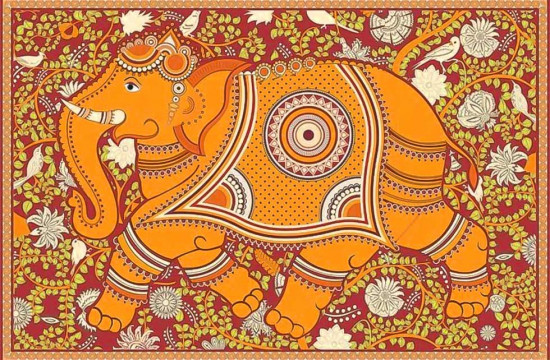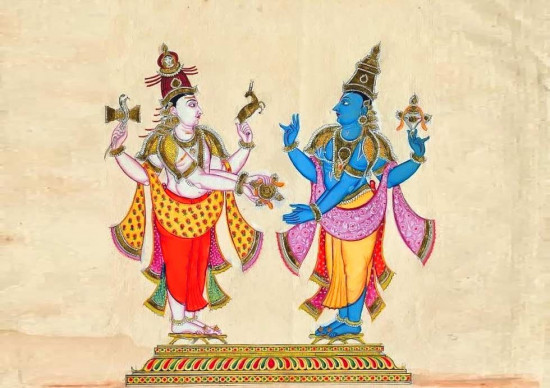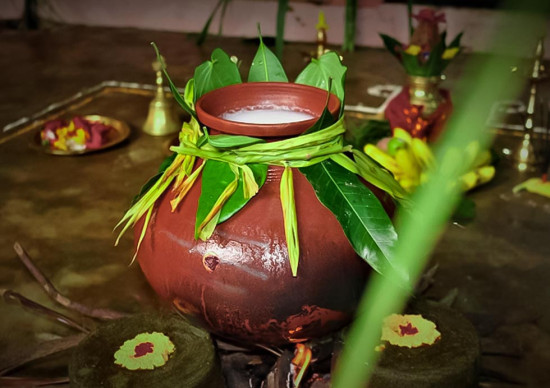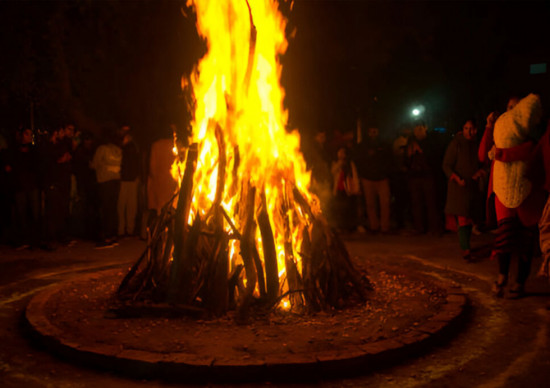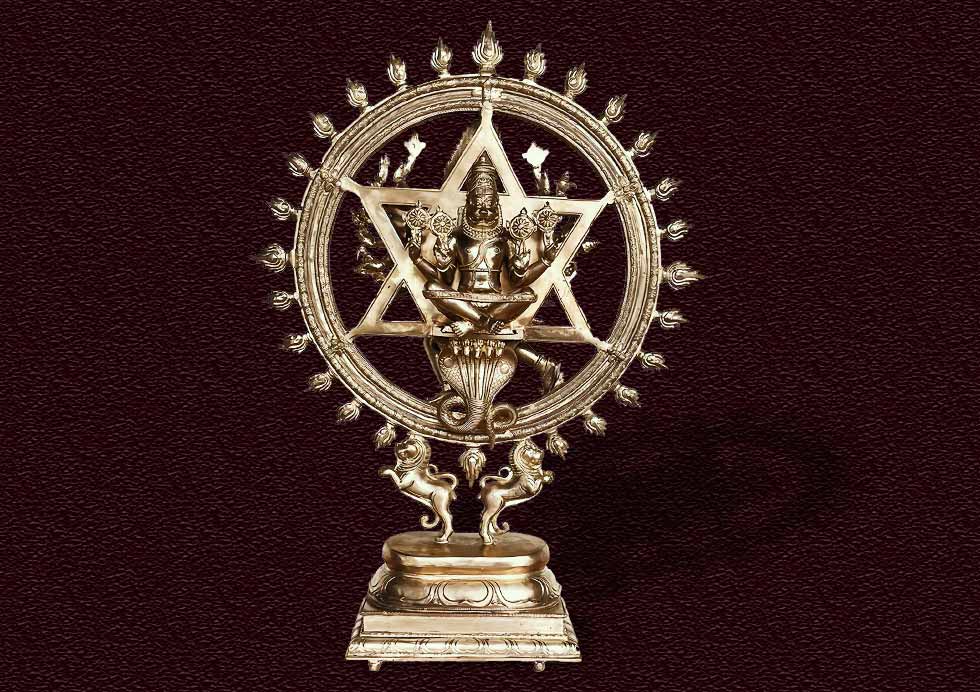
In Hindu temples, particularly in South India, you might come across a rather intriguing sight: an idol of Chakrathalwar, a manifestation of Vishnu wielding the Sudarshana Chakra, with another figure seemingly emerging from its back. This curious companion is often Yoga Narasimhar, the fierce lion-headed avatar of Vishnu. But why are these two deities depicted together? Let's delve into the symbolism and meaning behind this unique pairing.
Chakrathalwar: The Sage of the Sudarshana Chakra
Chakrathalwar, also known as Sudarshana Azhwar, is a revered figure in Vaishnavism, a prominent Hindu sect dedicated to Lord Vishnu. He is considered the embodiment of the Sudarshana Chakra, Vishnu's legendary discus weapon. This spinning disk, with its 108 serrated edges, symbolizes the ultimate force of righteousness, vanquishing evil and protecting the pious.
Legends abound regarding Lord Krishna’s Sudarshana Chakra's origin. One popular narrative credits Vishvakarma, the divine architect, with its creation. Vishvakarma, using leftover "sun dust" after tempering the Sun's brilliance, crafted three powerful objects: the Pushpaka Vimana (divine chariot), Shiva's Trishula (trident), and Vishnu's Sudarshana Chakra.
Legends abound regarding Lord Krishna’s Sudarshana Chakra's origin. One popular narrative credits Vishvakarma, the divine architect, with its creation. Vishvakarma, using leftover "sun dust" after tempering the Sun's brilliance, crafted three powerful objects: the Pushpaka Vimana (divine chariot), Shiva's Trishula (trident), and Vishnu's Sudarshana Chakra.
Sudarshana's Power and Protective Role
Vaishnavas revere Sudarshana as a protector, a force that intervenes for devotees facing dire situations. He is believed to be a manifestation of Vishnu's own protective power. Performing the "Sri Sudharsana Homam," a sacred fire ritual, is a way to appease Sudarshana and seek his blessings.
Interestingly, Vaishnava temples consider Chakrathalwar a Navagraha (nine planets) deity, similar to how devotees in Shaiva (Shiva-centric) temples worship the nine planets. This highlights the all-encompassing nature of Chakrathalwar's protective influence.
Interestingly, Vaishnava temples consider Chakrathalwar a Navagraha (nine planets) deity, similar to how devotees in Shaiva (Shiva-centric) temples worship the nine planets. This highlights the all-encompassing nature of Chakrathalwar's protective influence.

Yoga Narasimha: The Fierce and Protective Avatar
Yoga Narasimha, another facet of Lord Vishnu, takes the form of a half-man, half-lion. This ferocious avatar emerged in Vishnu's fourth incarnation, the Narasimha avatar, to vanquish the demon king Hiranyakashipu. Hiranyakashipu possessed a boon that made him invincible to man or beast, during the day or night, indoors or outdoors. To circumvent this, Vishnu manifested as Narasimha, neither fully man nor beast, emerging at twilight from a pillar that was neither indoors nor outdoors. Lord Narasimha ripped Hiranyakashipu's stomach open with his sharp claws, restoring order and justice.
While Yoga Narasimha represents immense power and might, his fierce form is often considered too wrathful for direct worship. Enter Chakrathalwar, the embodiment of the Sudarshana Chakra – a weapon said to be imbued with the power of Narasimha.
While Yoga Narasimha represents immense power and might, his fierce form is often considered too wrathful for direct worship. Enter Chakrathalwar, the embodiment of the Sudarshana Chakra – a weapon said to be imbued with the power of Narasimha.

The Intertwined Duo: A Symbol of Unified Power
Now we return to the original question: why does Yoga Narasimha stand behind Chakrathalwar? There are two key interpretations:
- Divine Duality: Within the Sri Vaishnava tradition, all aspects of Vishnu are considered expansions of the one supreme Lord. Therefore, Sudarshana Chakra is seen as an embodiment of Vishnu's power, just like Yoga Narasimha. Having Yoga Narasimha behind Chakrathalwar signifies the unified source of their power, both stemming from the divine essence of Vishnu.
- Protection and Power: Another interpretation emphasizes the protective role of both figures. Chakrathalwar, the Sudarshana Chakra, represents the ever-present shield safeguarding devotees. Yoga Narasimha, the fierce avatar, embodies the raw power that vanquishes evil when necessary. By placing Yoga Narasimha behind Chakrathalwar, it signifies the potent force that lies behind the protective shield, ready to be unleashed if needed.
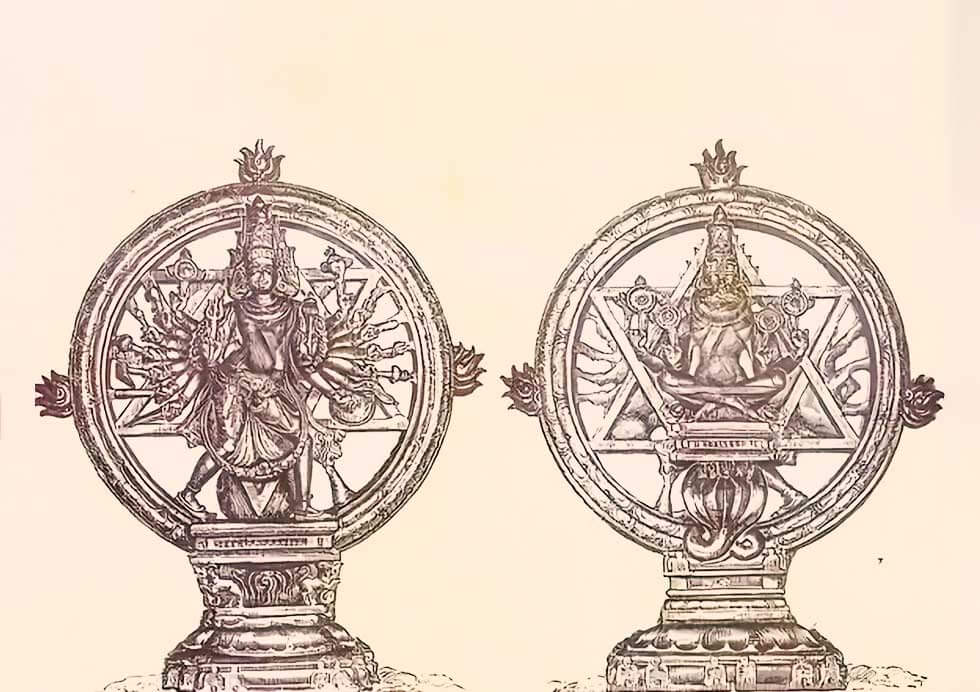
Beyond the Symbolism: Exploring the Spiritual Significance
Exploration of Yoga Narasimha and Chakrathalwar doesn't end with the symbolism behind their positioning. Let's delve deeper into the spiritual significance they hold for devotees.
Seeking Refuge and Guidance
For Vaishnavas, Chakrathalwar is a refuge. He represents the ever-present shield that deflects negativity and protects those who seek his blessings. Devotees perform pujas (worship rituals) and chant mantras dedicated to Chakrathalwar, seeking his protection for themselves and their loved ones. Lord krishana’ Sudarshana Chakra, is his embodiment, is a constant reminder that the divine shield is always present.
Yoga Narasimha, however, inspires a different kind of connection. He represents the unyielding power that resides within the divine. While his fierce form might seem intimidating, his presence signifies the ultimate power of good to overcome evil. Devotees might not directly worship Yoga Narasimha, but his presence alongside Chakrathalwar serves as a source of strength and reassurance. It's a reminder that the divine possesses the power to intervene decisively when necessary.
Aligning with the Divine
The combined image of Yoga Narasimha and Chakrathalwar also carries a subtle message for devotees. While they represent the divine's protective and powerful aspects, it is a reminder that true protection comes from aligning oneself with the divine. By cultivating virtues like righteousness, devotion, and self-control, devotees can strengthen their own connection to the divine shield.
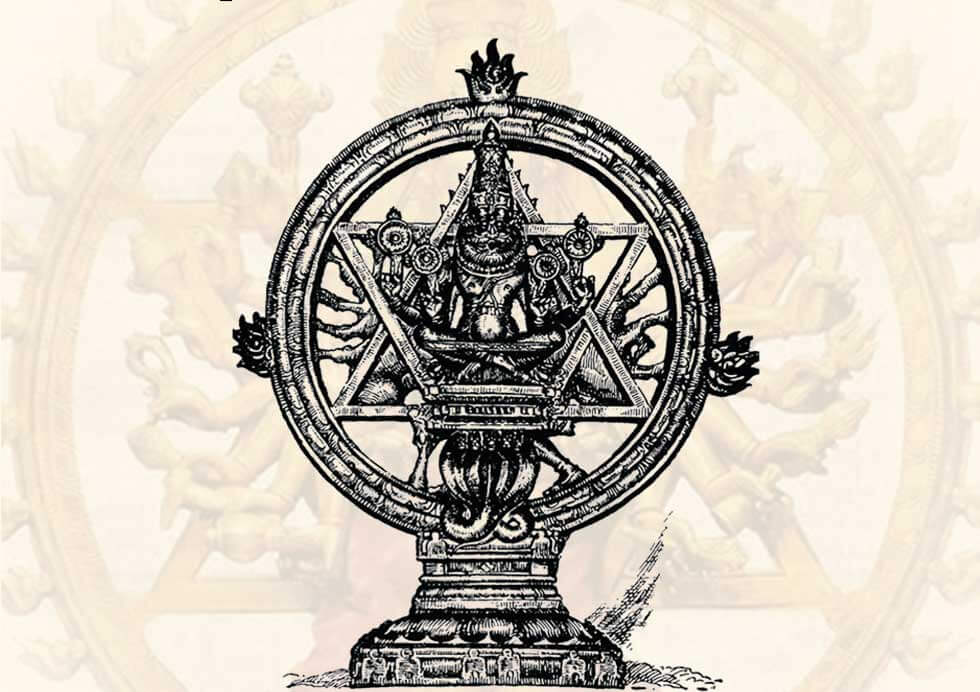
The Power of Inner Strength
Just as Yoga Narasimha's power resides within him, the potential for inner strength lies within each devotee. By practicing their faith and leading a virtuous life, devotees can cultivate their own inner "Sudarshana Chakra" – a shield of righteousness that protects them from negativity.
A Reminder of Balance
The presence of both figures is also a reminder of the importance of balance. Just as the fierce power of Narasimha is tempered by the protective shield of Chakrathalwar, devotees are encouraged to cultivate a balanced life. They should strive for inner peace and righteousness, while also acknowledging the potential for external challenges.
A Conclusion: Beyond the Physical Representation
Ultimately, the presence of Yoga Narasimha behind Chakrathalwar goes beyond mere physical positioning. It symbolizes the multifaceted nature of the divine. Just as Vishnu embodies both creation and preservation, the presence of these two figures together represents the two sides of the same coin: protection fueled by immense power. It is a reminder that even within the gentlest shield, the potential for fierce intervention resides, ensuring the ultimate triumph of good over evil.
This combined representation serves as a source of comfort and strength for devotees. It assures them of the unwavering protection afforded by the divine, a protection backed by the immense power of the Narasimha avatar.


